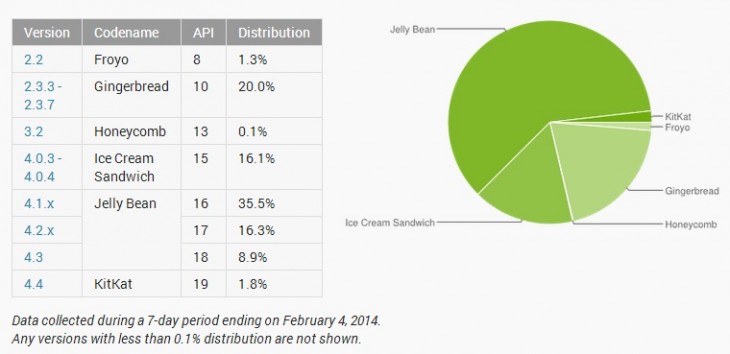
Google officially introduced the latest KitKat version of its Android operating system in October last year, and despite three months passing, it continues to be installed on less than 2 percent of all active Android devices worldwide, according to new data.
KitKat is installed on 1.8 percent of all Android phones or tablets that log in to the Google Play store; that’s a small increase on the 1.4 percent that it charted in January. Jelly Bean — the precursor to KitKat — saw its figure rise to 60.7 percent from 59.1 percent the previous month. Particularly of note is the fact that the newest Jelly Bean build — Android 4.3 — rose from 7.8 percent to 8.9 percent over the past month.
Looking at the most significant of the rest: the ratio of devices running Ice Cream Sandwich dropped from 16.9 percent to 16.1 percent. Gingerbread still accounts for a sizable 20 percent of Androids, but that’s down from 21.2 percent in January.
Last month: Jelly Bean nears 60% installation rate among Android users – KitKat accounts for just 1.4%
The data reflects that KitKat roll outs have mainly come to Google’s Nexus range and Motorola devices, with many third-parties yet to finalize their upgrade plans or launch new KitKat-powered devices.
Android upgrades require a considerable amount of work and coordination from handset makers and also operators before the benefits can reach existing device owners, and that slows things down. (For example, some Sony devices have only just received Android 4.3 updates, let alone KitKat.
The situation is in stark contrast to Apple and the iOS operating system which it has a far greater degree of control over. iOS 7 was released in September, and it went on to gain 64 percent adoption among compatible devices within the first month. According to Apple, the figure reached 80 percent at the end of January.
Image via suhakri_hsu / Flickr
Get the TNW newsletter
Get the most important tech news in your inbox each week.





